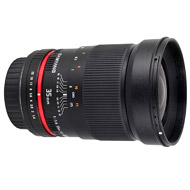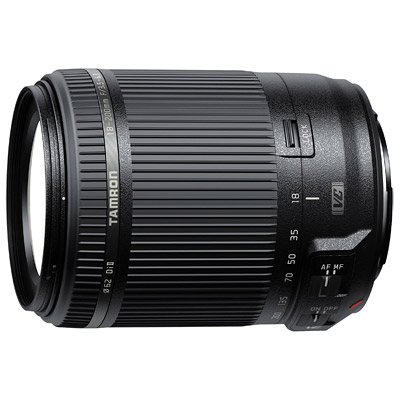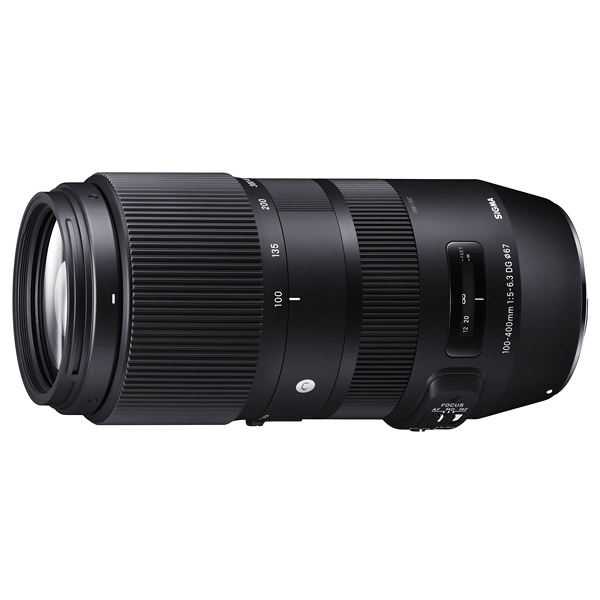
|
| Accept Cookies | Customize | Refuse Cookies |
Decris www.juzaphoto.com/p/Decris  |
 | Samyang 35mm f/1.4 AS UMC Pros: Sharpness, construction, brightness, colors, bokeh Cons: Weight, chromatic aberrations Opinion: I waited more than 1 year to review it, to know it better especially with regard to focusing as it is a manual focus lens and large aperture: good brightness in the viewfinder, less well the depth of field, very small, at the most open apertures. The compromise? make use of the electronic rangefinder of modern camera bodies or easily calculate the hyperfocal thanks to the notches of the pdc marked on the tube or, in extreme, take two slightly staggered photos of the same subject ... On my Nikon D810, this lens communicates perfectly both for the adjustment of the apertures from the camera body, both for the transmission of exif data and also for the confirmation dot of the m.a.f. The lens is really important with its 111mm in length, 660 gr in weight and the front lens with 77mm filter. This is due to its complex optical scheme that includes 12 lenses (1 asf. and 2 high refr.) in 10 groups. The diaphragm varies from f.1,4 up to f.22, counts 8 lamellae and can be adjusted to 1/2 jerky steps. The minimum focusing distance is 30 cm, while infinity is after 3 meters. The barrel, well rubberized, measures 83 mm and makes a total excursion of 145 °. The dimensions increase even more when the bulky (but effective) hood is mounted, which fortunately can also be reassembled inverted. Two things are to be emphasized: the "buttery" rotation and without games of the barrel of m.a.f. and the three-dimensionality of the images (you notice it as soon as you frame). As always done, I will publish images without posts, but only converted from RAW to full resolution to JPEG with Nikon's Capture NX-D program. As for the Sharpness we have good results in the center already from F1.4 that improve significantly to f2 and find the maximum in the center at f3.2 and on the whole frame from f.4 up to f.5.6 . It is useless to close further if you do not need a greater p.d.c. The colors are excellent with a good micro-contrast and a slight tendency to warm tones. There are important chromatic aberrations (mainly magenta) especially on very reflective subjects and especially at the most open diaphragms and there is a slight barrel distortion. Note apart from the Bokeh that I find beautiful up to 5.6 and a bit '"crowded" by f.8, then obviously also depends on the subjects and their distance from the focused point ... The vignetting is noticeable up to f2.2 and then becomes negligible already from f.2.8. In summary I found this objective very valid even with some "mole" that can be removed with an adequate post-production especially in relation to its truly "popular" cost and also for the impeccable mechanical construction. sent on September 08, 2022 |
 | Nikon AF 28-85mm f/3.5-4.5 Pros: Robustness, compactness, global yield, AF, colors Cons: Vignetting, chromatic aberrations Opinion: sent on September 05, 2022 |
 | Nikon 80-200mm f/4 AI-s Pros: Sharpness, solid construction, colors, bokeh Cons: Chromatic aberrations, vignetting, flare Opinion: sent on August 23, 2022 |
 | Nikkor 85mm f/2 AI Pros: Sharpness, refined and robust mechanics, bokeh, neutral color rendering, long excursion ring focus, dimensions and weight. Cons: Chromatic aberrations at the most open diaphragms, flare in the backlight without hood Opinion: For a few days I have this perspective that, although dated (over 40 years), still defends itself well from all the points of view that I will gradually take into consideration. It is a very robust lens even if it is very small and light. Some technical data: made in Japan construction without quality compromises, all glass and metal started with the serial number 175111 in April 1977 and ended with the serial n° 265143 in September 1981 with over 90,000 lenses produced. The optical scheme has 5 lenses, with SIC anti-reflective treatment, and a 7-blade diaphragm that can close up to f/22. The measures are, without caps: 61 X 63.5 mm and its weight is only 310 gr while with the caps and its dedicated hood SH10 reaches 355 gr. The real significant difference with its successor, which has the same optical scheme and dimensions, is the rotation amplitude of the focus ring of 255 ° against the "only" 170 ° of the AI-S. This allows an extremely selective and precise focusing also thanks to its sweetness of rotation: just think that from 85 cm (min. distance of maf) to 140 cm pass 90 ° . It should be noted that all Nikon prosumer and pro, have the assisted focus with electronic rangefinder that, after indicating the direction of rotation to follow for a correct maf, confirms with a green dot the exact one. Being a lens devoted to portraiture, to details in architecture and still life and set landscape, my attention was mainly focused on color rendering, bokeh and the detachment of the floors. I favored open apertures that allow you to isolate the subject from the background and I never went beyond f/5.6 . My impression is certainly positive: the bokeh is particularly good, the color rendering substantially neutral with a slight hint of vividness (perhaps the "glassiness" of only 5 lenses helps ...) and even if the lens is not contrasted (such as the 80-200 Ai f / 4.5 that I also possess) there is no lack of micro-contrast even in the finest details especially at f / 4 and f / 5.6. The sharpness is already good at the maximum f/2 aperture to improve significantly from f/2.8 and reach the excellent at f/4, while the perfect uniformity throughout the frame is reached only from f/5.6. I noticed from f/8 a beginning of diffraction that begins to penalize the yield. As for chromatic aberrations, they are visible (at strong magnifications) in out-of-focus at f/2 and f/2.8 (pink-magenta and green) and decrease drastically from f/4. All in all, I consider it a "balanced" lens that is still very valid today and that makes portability and made global its trump cards. Since it is said that a photograph tells more than 1000 words, I will not dwell further, but I will publish a series of photos whose title will refer to this test. The photos have NOT been modified in any way (contrast, colors and sharpness are those of the original camera settings and RAW files), while some "compositional" cropping has been done. sent on March 11, 2022 |
 | Nikon 200mm f/4 Ai-S Pros: Sharpness, color fidelity, contrast, bokeh, transportability Cons: Minimum focus distance Opinion: Already a owner of the legendary 105 Ai-s (resold later in the digital transition), I have recently returned to this beautiful Nikon series. Used on full-frame returns images that leave their mark. It is striking how a 40-year-old project can still excel even on high-performance sensors of the latest generation. Used with D750 , my specimen defines the subjects by isolating them from the general context while leaving it very identifiable. The very long rotation of the maf ring (considered by some to be excessive) helps to analyze the minimum detail of the framed subject, almost a scan centimeter by centimeter... Tested mainly at medium distances (3-12 meters) at the diaphragms 4-5.6 gave me an enviable detachment of the floors with a beautiful bokeh not "ethereus or bowed" but structured with its general homogeneity that contributes to the perfect description of the resumed environment. On a chromatic level I find it neutral but with vivid colors and a good contrast that differentiates it a little from the yield of the AF-D series that makes the colors almost pastel. The size of the lens is excellent and will probably invite us to leave it permanently in the bag given the low weight. sent on February 24, 2021 |
 | Tamron AF 18-200mm f/3.5-6.3 Di II VC Pros: Very affordable price with long-long life guarantee (the one taken from me 10 years polyphoto), lightness, more than good optical rendering. Very good stabilization and very natural rendering of the colours, all in only 400 grams and with an enviable range of focal lengths in just over 10 cm. Cons: At long focal lengths and with scarcity of light you have to go up ISO. Plastic bayonet. Opinion: My considerations are expressed considering, of course, the excellent price-quality ratio and are therefore not to be taken as absolute value. First of all the construction with a good assembly and the materials that do not give the sensation of having a toy between the hands: the zoom extends quite fluidly from 18 to 135 with a single slight forcing from 135 to get to 200, but I think with the use tent to SCO Mparire, and once extended completely, it maintains extremely stable without games. Frankly, from new, the lock button at 18mm I guess I will never use it. The plastic nozzle, joins perfectly with the body and also here there are no games and the whole is well balanced (I tried it on a body Nikon D 7200) and I think that the best coupling of this lens is with entry level bodies of Nikon series 3000 and 500 0 with medium-high pixel density for holidays with reduced baggage or for generalistic use. The focus, I was really surprised, quick and accurate with just a slight buzz when going over 2-3 meters up to infinity while it is almost silent at short distances. Precise that I used the MAF with the center point and was found accurate and without hesitation already at the first attempt; Then I inserted in the traectory towards the focus, disturbing elements but, always using the center point, I got subjects in focus without any front-back focus. The optical yield is more than good at the shorter focal lengths even at relatively large and medium openings with a slight penalization of the extreme areas that disappear by diaphragming at F 8 and thus continue up to 135 mm without substantial sagging. To obtain an optimum yield at 200 you have to close further up to F 11-16 and the yield is still good. At 18 there are barrel distortions, visible species with geometric subjects, but unexpectedly smaller than those generated by much more expensive and emblazoned even-range optics (an example for all the Nikkor 18-200), while going up with the focal lengths and moving from Medium wide-angle medium telephoto they change of sign and decrease, so that in the use not "architectural" barely see themselves. The fall of light at the edges, is present but never very high, especially at the medium-long focal lengths and the parasitic reflections and the flashes, with the help of the lens hood and a prudent framing, can be well managed as not excessive. In short, I find this lens very successful and suitable for short trips outside the door or when you go wandering to photograph without precise purpose or for the holidays without having the mood to bring the equipment on the beach because of sand or mountain for the weights and excessive clutter. sent on January 04, 2019 |
 | Sigma 100-400mm f/5-6.3 DG OS HSM C Pros: Even sharp opening, efficient stabilization, very natural colors with the right contrast, very precise focus, small size, good blur, price.rn Cons: The lack of collar for tripods Opinion: Taken for only 3 days, I'm impressed with her performance. Upon arriving, tried home to see the precision of focus (my fear was a pronounced front-back focus) I also took to a backlight curtain of 310 mm to 1/20 second without stirring. So I tried it on a soccer ball (curved surface) always with the viewfinder, always with free hand, but with flash for maximum contrast and the focus was with a pleasing and progressive out-of-fire in nearby areas as well as saturated, but loyal colors. The following afternoon test in the garden with stray cat: confirms the first impressions and great performances even to infinity. You can also test the magnification ratio (light macro for floral or still-life subjects) and I get detailed shots with a very blurry. I did the queen test instead in the open, in a hilly area where it has been shown to have a precise, sensitive focus and fast without ever being fooled by the sequence of plans or the homogeneity of the plowed land, with onemade from the high contrast and high contrast. The weight feels, but with my Nikon D7100 with PB the set did not seem unbalanced. The optic seems to weigh a lot more since, despite the remarkable focal length, everything it is enclosed in a compact body, well finished and I hope it is robust .... At the price of just over 700 euros with the guarantee of the Italian importer, I do not regret my good Tamron 70-200 f / 2.8 which I put immediately available for sale. This is the goal, if you beat it with even more sophisticated and much more expensive optics for semi-professional use. sent on October 01, 2017 |
 JuzaPhoto contains affiliate links from Amazon and Ebay and JuzaPhoto earn a commission in case of purchase through affiliate links.
JuzaPhoto contains affiliate links from Amazon and Ebay and JuzaPhoto earn a commission in case of purchase through affiliate links.May Beauty Be Everywhere Around Me